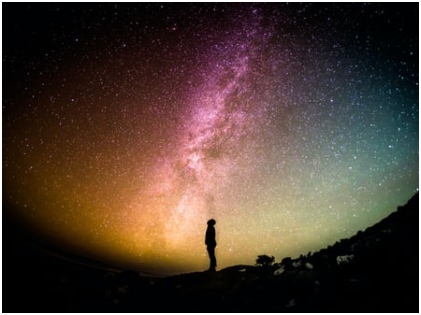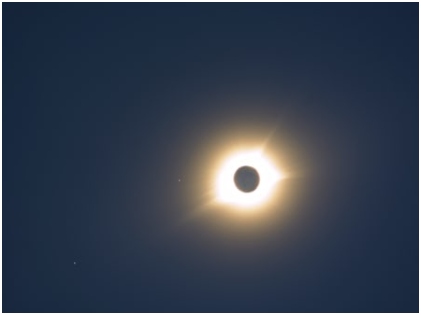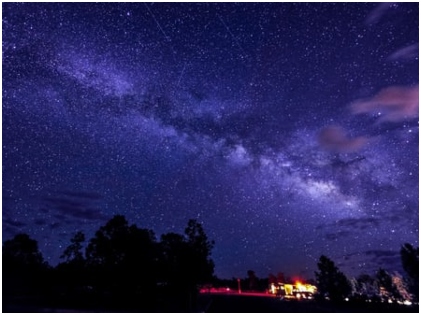 You have heard about storms and hurricanes, but have you heard about space hurricanes? Recently scientists have spotted a space hurricane hovering over the North Pole. As per a new study, the swirling mass of plasma is several miles above the North Pole, and it was raining electrons instead of water.
You have heard about storms and hurricanes, but have you heard about space hurricanes? Recently scientists have spotted a space hurricane hovering over the North Pole. As per a new study, the swirling mass of plasma is several miles above the North Pole, and it was raining electrons instead of water.
Until now, the existence of space hurricanes remained unproven. Satellites found space hurricanes in August 2014. Scientists from Shandong University in China uncovered and later analyzed it. Scientists have reiterated that it needs further studies because this type of geomagnetic activity can disrupt GPS satellites.
Space Hurricane That Closely Resembles Tropical Storms
 The research team studied the Earth’s ionosphere spinning in a counterclockwise direction showing multiple spiral arms that lasted for eight hours; before eventually breaking down. These space hurricanes are pretty similar to the ones spotted down at the Earth’s lower atmosphere. Tropical storms are usually found over warm bodies such as oceans and gulfs.
The research team studied the Earth’s ionosphere spinning in a counterclockwise direction showing multiple spiral arms that lasted for eight hours; before eventually breaking down. These space hurricanes are pretty similar to the ones spotted down at the Earth’s lower atmosphere. Tropical storms are usually found over warm bodies such as oceans and gulfs.
When the air is warm, and the moist air rises, it creates a low pressure near the surface. It draws in the surrounding air, and may cause strong winds to blow and form clouds that lead to heavy rain. Tropical storms or hurricanes occur on Earth and Mars, Jupiter, and Saturn, while enormous solar tornadoes occur in the sun’s atmosphere. However, space hurricanes seen in the upper atmosphere of planets had not been previously detected.
Wide-Spread Phenomena and a Cause for Concern?

Plasma and magnetic fields exist throughout the atmosphere of planets, so the findings prove that space hurricanes are a widespread phenomenon.
Additionally, as per the study, the fact has been reinstated that the hurricane occurred during low geomagnetic activity. They suggested that they may be relatively more common within our solar system and beyond. Hurricanes can be powerful, rotating the weather systems around a more calm center. And it is complete with strong winds and pelting rain. This type of storm is capable of creating widespread damage. Similarly, there are plasma tornadoes seen in the atmosphere of the Sun and are disruptive.
Raining Electrons
Space hurricanes turned out to be 110 kilometers to 860 kilometers in altitude. It consisted of plasma swirling in an anticlockwise direction boasting the speed of 2,100 meters per second (6,900 feet per second). The center was still, just like other hurricanes at lower altitudes.
The visual impact of the same was stunning as the space hurricane rained electrons into the ionosphere. This created a huge, cyclone-shaped aurora below the hurricane. The whole thing lasted for nearly eight hours, providing incredible amounts of energy and momentum into the ionosphere.
A Touch of Mystery
 The space storm or hurricane conditions were otherwise quiet, which proved to be a mystery. A rain of charged particles seeping into the ionosphere from the solar wind generally creates a glowing green aurora at Earth’s higher latitudes. Still, the solar conditions at the time weren’t as noisy. They were reticent. So the mysterious phenomenon urged the team to find out what caused the plasma ruckus in the first place.
The space storm or hurricane conditions were otherwise quiet, which proved to be a mystery. A rain of charged particles seeping into the ionosphere from the solar wind generally creates a glowing green aurora at Earth’s higher latitudes. Still, the solar conditions at the time weren’t as noisy. They were reticent. So the mysterious phenomenon urged the team to find out what caused the plasma ruckus in the first place.
We already know that reconnecting magnetic field lines can transfer the energy emanating from the solar wind into the magnetosphere and ionosphere. Focusing on this fact, the team modeled this process and found out that a reconnecting interplanetary magnetic field can create the distinctive features noted in the space hurricane. And this can happen even when the solar wind is not very high. What creates a more efficient magnetic connection is the low solar wind.
Studying and understanding Earth’s very own space hurricane could help scientists find a deeper understanding of space. They will understand whether and how it can impact systems, especially those we rely on, like GPS.
The space hurricane may even lead to important space weather effects. This includes increased satellite drag, disruption in satellite navigation, High-Frequency radio communications, increased errors in over-the-horizon radar location, and communication systems. We need to understand how this phenomenon affects the surroundings. The future will help us understand the different aspects of this novel phenomenon. And the possible implications it will have on our planet. Until then, we can hope that the scientists continue to make great progress in their research and the news keeps coming in on the developments.





